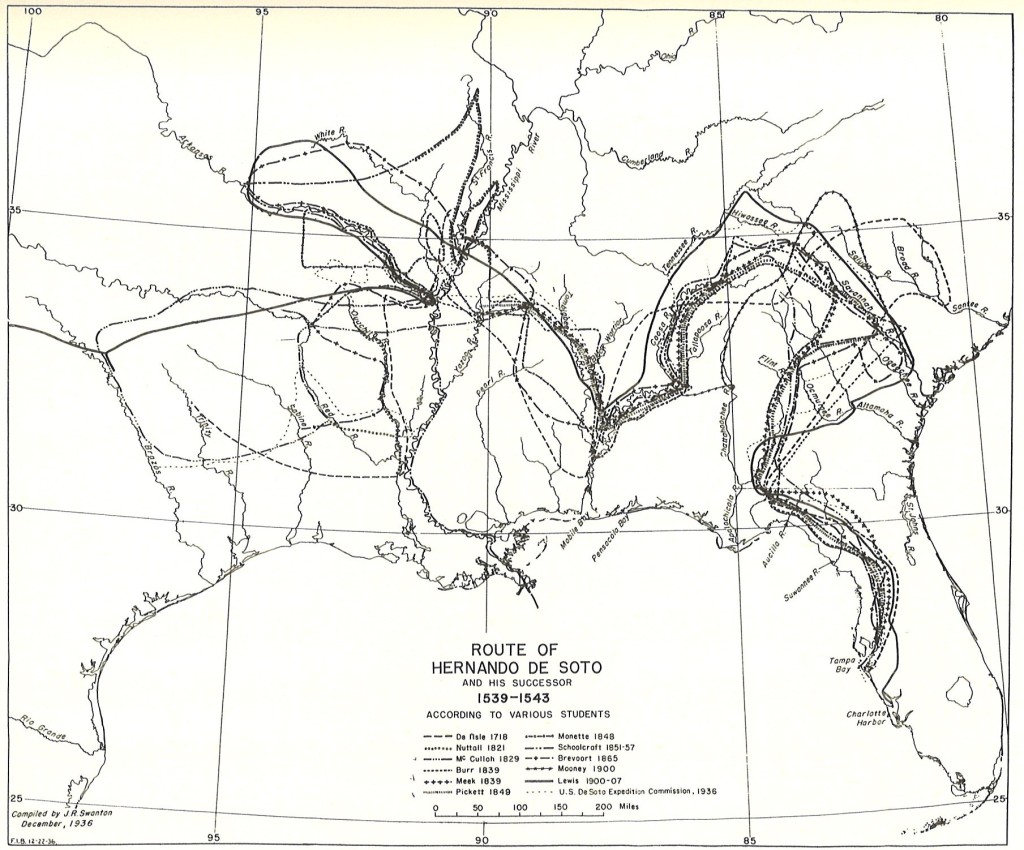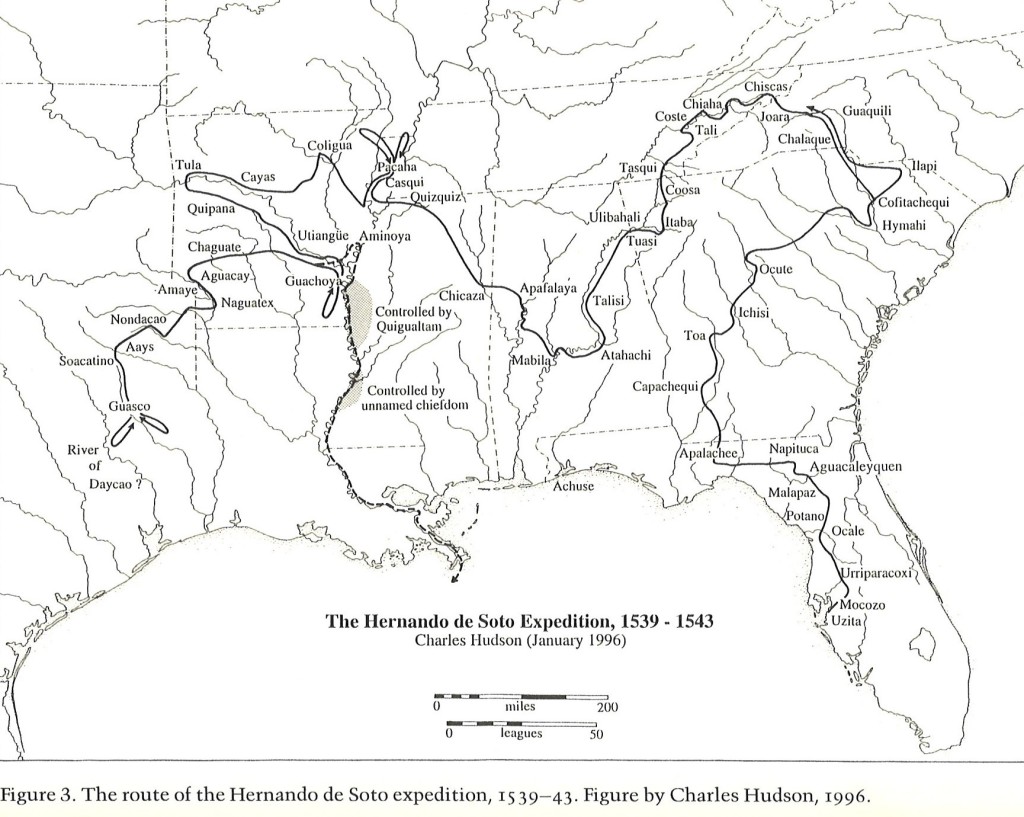---
We like to follow the activity, virtually, of the Woodbury Historical Tours and have had several posts. We have posted and commented at the Facebook site. These are cousins of Cape Ann and Gloucester which is comemerating their 400th this year.
 |
| Disputed paths, research views |
Finally, looking at the left of the photo, we see Texas, Oklahoma, Kansas, Missouri and Arkansas. Not forgetting Louisiana, Mississippi, Alabama, Tennessee, and Kentucky, the Carolinas, plus Florida. Our view has been activity to the west of the Mississippi River. However, we will change that as up north of here, we will find Ohio and Michigan and other areas related to the great northwest.
The legend in this view lists studies done about De Soto. The U.S. founded a Commission in 1936. There were several reports. Let's look at one plus consider some of the human elements which are important to our studies.
- Final report of the United States De Soto Expedition Commission. This site is hosted at the University of Pennsylvania. The date is 1970. At some point, we can look more closely at the research.
- Soto, Hernando de, approximately 1500-1542. This page lists many sources for studying this person and his times. The following caught our attention.
- Scenes and Adventures in the Semi-Alpine Region of the Ozark Mountains of Missouri and Arkansas, Which Were First Traversed by De Soto, in 1541 (Philadelphia: Lippincott, Grambo and Co., 1853). Looking closely, we see that this deals with the travels of a geographer out of New England (its long reach is our focus). The following summarizes some of the personal details.
- Henry Rowe Schoolcraft (Wikipedia, WikiTree). Pick "Web presentation" which goes to a page at gutenberg[.]org's site where a book from 1853 is presented in a great format.
- The theme: Ozark Mountains of Missouri and Arkansas which were first traversed by De Soto, in 1541.
- Schoolcraft went to the area in 1816 and kept a journal. He provides fifteen chapters on his travels and turmoil. He spent three years doing his studies.
- He provides more technical details (Mineralogy, Geology, and Mines; Geography; Antiquities and Indian History) in Appendices.
Now, this is prior to the Missouri deal that also brought Maine into the Union. He got to St. Louis which was being set up as the headquarters for carving of the western land.
As he travels, Schoolcraft references De Soto's work. Example:
From the apparent vestiges in this quarter, I am of opinion that De Soto's "Tanico" must be located in this vicinity, and that he crossed the White river near this place. A march west of this point, over a hilly country, would bring him into the fertile valley of the Little Red river, or Buffalo creek—his probable Tula, where his people first tasted the flesh of this animal, and where he recruited his army for a new effort.
There are several things to note. For one, the White River that is mentioned can be thought of as related to Branson, MO. Most adults have heard of that entertainment area on the upper-west side of the Ozarks. Some mention Joplin in the same context. As the map say, "disputed paths" depicts the proper view, however we must not forget that this is real country of the U.S. settled, for the most part, after the Lewis & Clark expedition.
 |
| One view, of many |
Then, there are names given: Tanico; Tula. The image to the right provides some of these. The map is from the Georgia Historical Society's article.
Remarks: Modified: 06/15/2023
06/15/2023 --
No comments:
Post a Comment